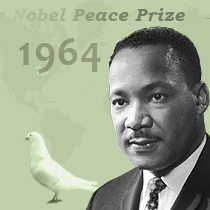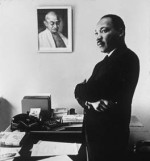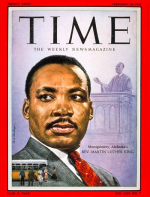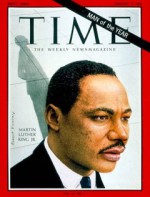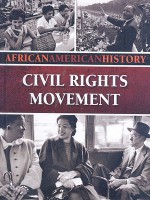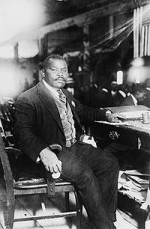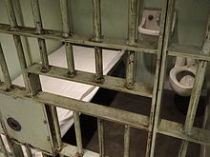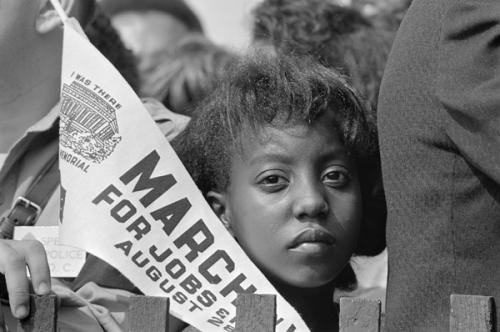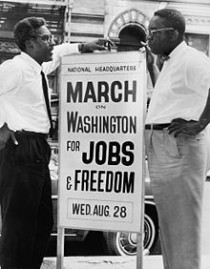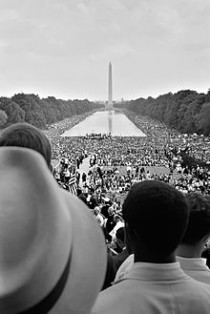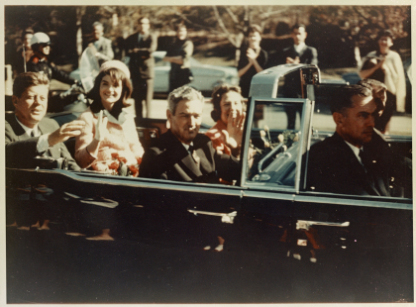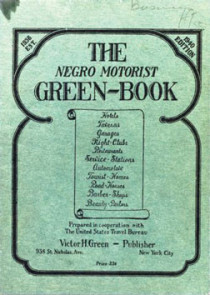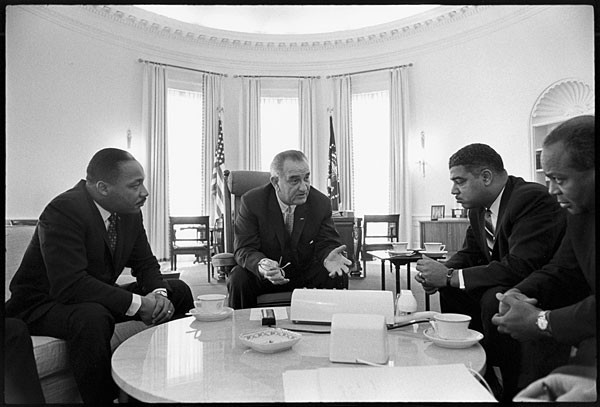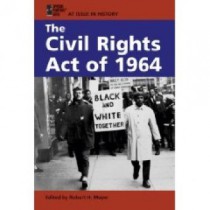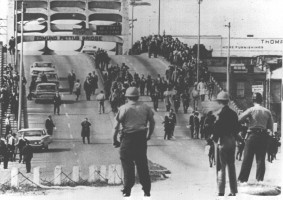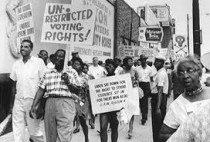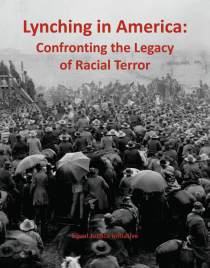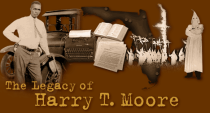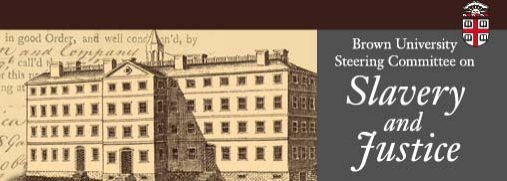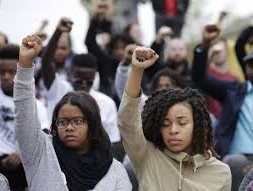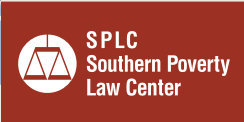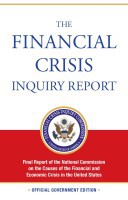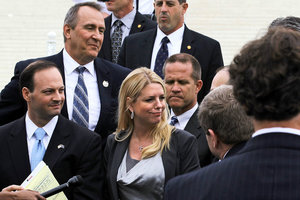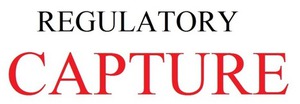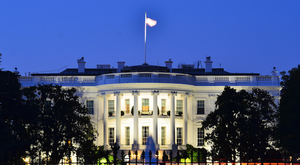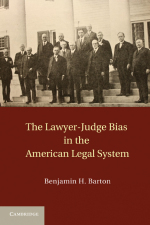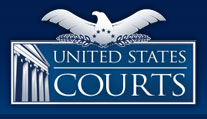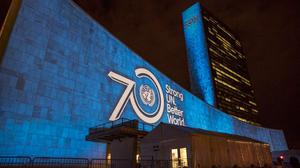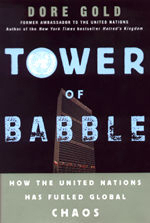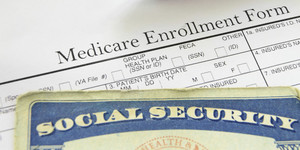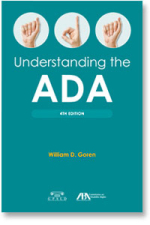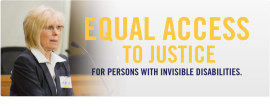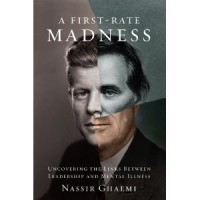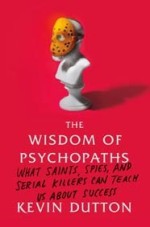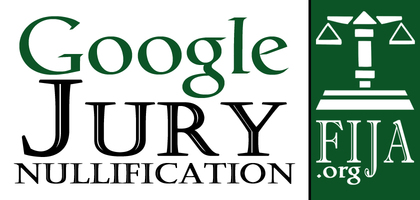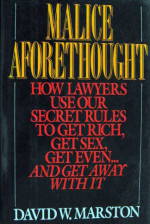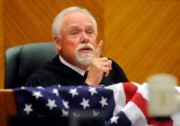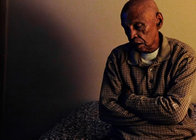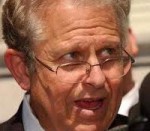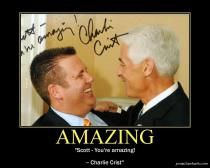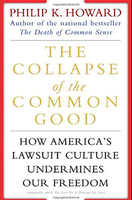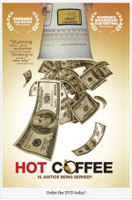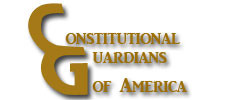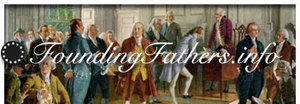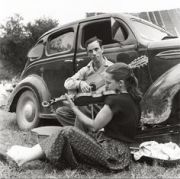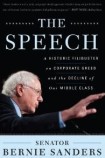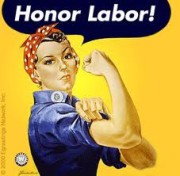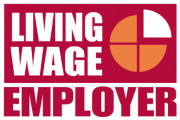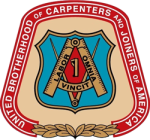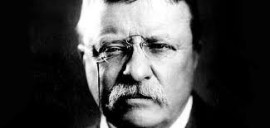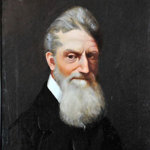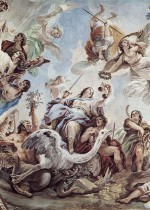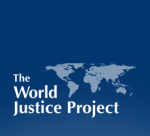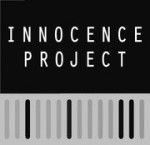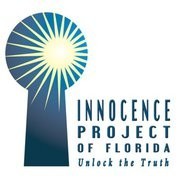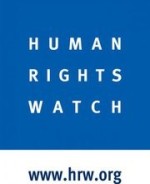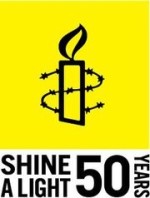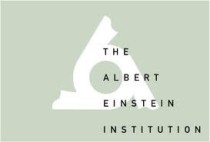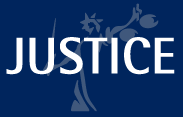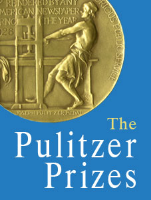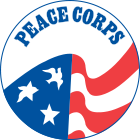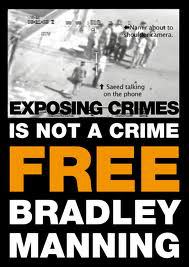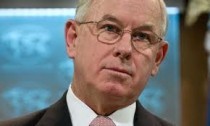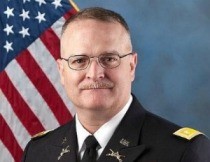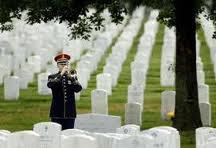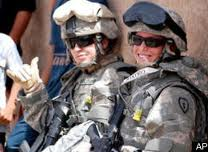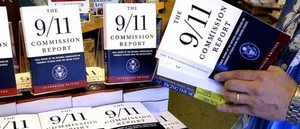Dr. Martin Luther King, Jr. Civil Rights Era in the United States of America - A Brief History
Martin Luther King, Nobel Peace Prize 1964
African American civil rights leader Dr. Martin Luther King, Jr., is awarded the Nobel Peace Prize for his nonviolent resistance to racial prejudice in America. At 35 years of age, the Georgia-born minister was the youngest person ever to receive the award. History
______________________________________________________
Martin Luther King - I Have a Dream Speech - August 28, 1963
Lips dripping with words Interposition and Nullification
Dr. Martin Luther King, Jr. spoke of "interposition" and "nullification" of racial civil rights during his "I Have a Dream" speech on August 28, 1963 at the Lincoln Memorial:
"I have a dream that one day, down in Alabama, with its vicious racists, with its governor having his lips dripping with the words of "interposition" and "nullification" -- one day right there in Alabama little black boys and black girls will be able to join hands with little white boys and white girls as sisters and brothers."
Interposition is an asserted right of a U.S. state to oppose actions of the federal government that the state deems unconstitutional.
Nullification is a theory that a state has the right to nullify, or invalidate, any federal law which that state has deemed unconstitutional.
Life and Inspiration of Dr. Martin Luther King, Jr.
Selections from Interesting Facts About Martin Luther King,
Jr.
King’s father was born "Michael King", and Martin Luther King, Jr., was originally named "Michael King, Jr.," until the family traveled to Europe in 1934 and visited
Germany. His father soon changed both of their names to Martin Luther in honor of the German Protestant leader Martin
Luther.
Growing up in Atlanta, King attended Booker T. Washington High
School. A precocious student, he skipped both the ninth and the twelfth grade and entered Morehouse College at age
fifteen without formally graduating from high school.
King became pastor of the Dexter Avenue Baptist Church in Montgomery, Alabama when
he was twenty-five years old in 1954. The Montgomery Bus Boycott began in 1955 with the arrest of Rosa Parks. As a
result, King helped organize the boycott from his basement office in the church, and began a 13 year struggle for civil rights that ended with his assassination in 1968.
Inspired by Gandhi’s success with non-violent activism, King visited Gandhi’s birthplace in India in 1959. The trip to India affected King in a profound way,
deepening his understanding of non-violent resistance and his commitment to America’s struggle for civil rights.
King was also said to be influenced by Jesus, Abraham Lincoln, Benjamin Mays, Hosea Williams, Bayard Rustin, Henry
David Thoreau, Howard Thurman and Leo
Tolstoy.
King was awarded the Nobel Peace Prize on December 10, 1964.
THE SOUTH: Attack on the Conscience
Monday, Feb. 18, 1957
Across the South—in Atlanta, Mobile, Birmingham, Tallahassee, Miami, New Orleans—Negro leaders look toward Montgomery, Ala., the cradle of the Confederacy, for advice and counsel on how to gain the desegregation that the U.S. Supreme Court has guaranteed them. The man whose word they seek is not a judge, or a lawyer, or a political strategist or a flaming orator. He is a scholarly, 28-year-old Negro Baptist minister, the Rev. Martin Luther King Jr., who in little more than a year has risen from nowhere to become one...more
Martin Luther King Jr. Stanford link
Man of the Year, Jan. 3, 1964
In its January 1964 issue, Time named Martin Luther King, Jr., ‘‘Man of the Year’’ for 1963, making the civil rights leader the first African American recipient of this honor. This was not King’s first appearance on the cover of Time. In 1957 he was featured on the cover for his role in the Montgomery bus boycott.
African-American Civil Rights Movement (1954–1968) Wikipedia
The African-American Civil Rights Movement or 1960s Civil Rights Movement encompasses social movements in the United States whose goals were to end racial segregation and discrimination against black Americans and to secure legal recognition and federal protection of the citizenship rights enumerated in the Constitution and federal law. This article covers the phase of the movement between 1954 and 1968, particularly in the South. The leadership was African-American, much of the political and financial support came from labor unions (led by Walter Reuther), major religious denominations, and prominent white politicians such as Hubert Humphrey and Lyndon B. Johnson. read more
____________________________________________________
Malcolm X: Make It Plain (Full PBS Documentary)
African-American Civil Rights Movement (1896–1954) Wikipedia
The Civil Rights Movement in the United States was a long, primarily nonviolent series of
events to bring full civil rights and equality under the law to all Americans. The movement has had a lasting
impact on United States society, in its tactics, the increased social and legal acceptance of civil rights, and in its exposure of the prevalence and cost of racism. Read more
- Timeline of the African-American Civil Rights Movement
- The Atlantic Monthly, November 1965, W.E.B. Du Bois
- Frederick Douglass, National Park Service
- Frederick Douglass, Wikipedia
- Gordon, or Whipped Peter, Wikipedia
- Icons of Cruelty (Gordon), New York Times
- Booker T. Washington, Wikipedia
- National Association, N.A.A.C.P.
National History Day documentary on Bull Connor, Birmingham's Commissioner of Public Safety, whose use of police dogs and fire hoses on civil rights demonstrators dramatically backfired and called national attention to the Civil Rights Movement.
Letter from Birmingham Jail - April 16, 1963
Letter from Birmingham Jail
Wikipedia
The Letter from Birmingham Jail or Letter from Birmingham City Jail, also known as The Negro Is Your Brother, is an open letter written on April 16, 1963, by Martin
Luther King, Jr., an American civil rights leader.
King wrote the letter from the city jail in Birmingham, Alabama, where he was confined after being arrested for his part in the Birmingham campaign, a planned non-violent
protest conducted by the Alabama Christian Movement for Human Rights and King's Southern Christian Leadership Conference against racial segregation by Birmingham's city government and downtown
retailers. He gave bits and pieces of the letter to his lawyers to take back to movement headquarters, where the Reverend Wyatt Walker began compiling and editing the literary jigsaw
puzzle.
King's letter is a response to a statement made by eight white Alabama clergymen on April 12, 1963, titled "A Call for Unity". The clergymen agreed that social injustices
existed but argued that the battle against racial segregation should be fought solely in the courts, not in the streets. They criticized Martin Luther King, calling him an "outsider" who causes
trouble in the streets of Birmingham. To this, King referred to his belief that all communities and states were interrelated. He wrote, "Injustice anywhere is a threat to justice everywhere. We are
caught in an inescapable network of mutuality, tied in a single garment of destiny. Whatever affects one directly, affects all indirectly… Anyone who lives inside the United States can never be
considered an outsider…" King expressed his remorse that the demonstrations were taking place in Birmingham but felt that the white power structure left the black community with no other
choice. Read more
- Letter from Birmingham Jail, UPenn African Studies Center
- Statement by Alabama Clergyman, Mass Resistance
Letter from a Birmingham Jail [King, Jr][...]
Adobe Acrobat document [75.2 KB]
Letter from Birmingham Jail
Encyclopedia of Alabama
Martin Luther King's "Letter from Birmingham Jail" is the most important written document of the civil rights era. The letter served as a tangible, reproducible account of the long road to freedom in a movement that was largely centered around actions and spoken words. Despite its pragmatic and hurried origins, the document is now considered a classic work of protest literature. Read more
Read some of the comments on YouTube. Some attitudes have not changed since the 1960's.
March on Washington for Jobs and Freedom, Aug-28-63
March on Washington for Jobs and Freedom (August 28, 1963)
Black Past.org
The March on Washington for Jobs and Freedom, held on August 28, 1963 in Washington, D.C., was a landmark event for the early civil rights movement and is partly credited
with winning the passage of the federal Civil Rights Act of 1964. Over 250,000 demonstrators converged on Washington, D.C., in what was to that point the largest public protest in the history
of the nation. Read more
"I Have a Dream" is the famous name given to the public speech by Martin Luther King, Jr., in which he called for racial equality and an end to discrimination. King's delivery of the speech on August 28, 1963, from the steps of the Lincoln Memorial during the March on Washington for Jobs and Freedom, was a defining moment of the American Civil Rights Movement. Delivered to over 200,000 civil rights supporters, the speech is often considered to be one of the greatest and most notable speeches in human history and was ranked the top American speech of the 20th century by a 1999 poll of scholars of public address. Read more
- Link to Dr. King's I Have A Dream Speech on YouTube
transcript-march-pt3-of-3-2602934.pdf
Adobe Acrobat document [53.0 KB]
March on Washington for Jobs and Freedom, Aug-28-63
March on Washington for Jobs and Freedom Wikipedia
The March on Washington for Jobs and Freedom (or "The Great March on Washington," as styled in a sound recording released after the event) was the second largest
political rally for human rights in United States history and called for civil and economic rights for African Americans. It took place in Washington, D.C. on Wednesday, August 28, 1963. Martin
Luther King, Jr. delivered his historic "I Have a Dream" speech advocating racial harmony at the Lincoln Memorial during the march.
The march was organized by a group of civil rights, labor, and religious organizations, under the theme "jobs, and freedom." Estimates of the number of participants
varied from 200,000 (police) to over 300,000 (leaders of the march). Observers estimated that 75–80% of the marchers were black and the rest were white and other minorities.
The march is widely credited with helping to pass the Civil Rights Act (1964) and the Voting Rights Act (1965). Read more
__________________________________________________________
Assassination of President John F. Kennedy
The Negro Motorist Green Book: 1936-1964
Guidebook that aided black travelers during segregation reveals vastly different
D.C.
Washington Post
By J. Freedom du Lac
September 12, 2010
The old Holleywood tavern at Ninth and U streets NW, one of just eight bars in Washington listed as open to blacks in 1949, is now the indie-rock bar, DC9. Where the
Brass Rail restaurant once served blacks who were excluded from most downtown eateries, there is now a day-care center for toddlers and infants. Green's, a beauty parlor on 18th, south of U, is now a
Peruvian restaurant.
Half a century after the edition of the Negro Motorist Green Book with those D.C. listings was published, playwright Calvin Alexander Ramsey stumbled upon the book, which
was once a kind of Fodor's Black America - a travel guide for African Americans road-tripping in an era of racial segregation…
With a quotation from Mark Twain - "Travel is fatal to prejudice" - on its cover, the guidebook was published annually from 1936 until the Civil Rights Act of 1964
rendered it obsolete. The book, inspired by guides that told Jewish travelers which hotels and restaurants were restricted, covered places from Mexico to Montreal, identifying restaurants, service
stations, hotels, "tourist homes," taverns, liquor stores, beauty parlors, nightclubs, drugstores and tailors that catered to blacks who'd grown weary of wandering into "whites-only"
establishments.
During segregation, it wasn't uncommon for African American travelers to pack meals, blankets and even containers of gasoline in their cars for long trips. "We didn't
want to stop anywhere and get into a situation where we didn't know how it was going to turn out," says Ramsey, who is 60. Read more
Mississippi civil rights workers murders - June 21, 1964
Mississippi civil rights workers murders
Wikipedia
The Mississippi civil rights workers murders involved the lynching of three anti-racism and social justice activists near Philadelphia in Neshoba County, Mississippi on
June 21, 1964, during the American Civil Rights Movement.
The murders of James Chaney, a 21-year-old black man from nearby Meridian, Mississippi; Andrew Goodman, a 20-year-old white Jewish anthropology student from New York; and
Michael Schwerner, a 24-year-old white Jewish CORE organizer and former social worker also from New York, demonstrated the dangers faced by civil rights workers in the South, especially during what
became known as "Freedom Summer", dedicated to voter education and registration. Blacks in Mississippi, as throughout the former Confederacy, lived under racial segregation and Jim Crow laws, and had
been essentially disfranchised in Mississippi since the passage of the state constitution of 1890. Read more
_______________________________________________________
Nina Simone - Mississippi Goddam
Civil Rights Act of 1964 - July 2, 1964
Civil Rights Act of 1964
Wikipedia
The Civil Rights Act of 1964 (Pub.L. 88-352, 78 Stat. 241, enacted July 2, 1964) was a landmark piece of legislation in the United States that outlawed major forms of
discrimination against African Americans and women, including racial segregation. It ended unequal application of voter registration requirements and racial segregation in schools, at the workplace
and by facilities that served the general public ("public accommodations").
Powers given to enforce the act were initially weak, but were supplemented during later years. Congress asserted its authority to legislate under several different parts
of the United States Constitution, principally its power to regulate interstate commerce under Article One (section 8), its duty to guarantee all citizens equal protection of the laws under the
Fourteenth Amendment and its duty to protect voting rights under the Fifteenth Amendment. The Act was signed into law by President Lyndon B. Johnson, who would later sign the landmark Voting Rights
Act into law. more
Selma to Montgomery marches - March 1965
Selma to Montgomery marches - March 1965
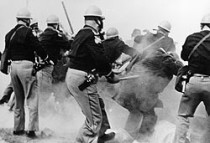 Alabama state troopers attack civil-rights demonstrators outside Selma, AL, Bloody Sunday, March 7, 1965.
Alabama state troopers attack civil-rights demonstrators outside Selma, AL, Bloody Sunday, March 7, 1965.
Selma to Montgomery marches
Wikipedia
The Selma to Montgomery marches were three marches in 1965 that marked the political and emotional peak of the American civil rights movement. They grew out of the voting
rights movement in Selma, Alabama, launched by local African-Americans who formed the Dallas County Voters League (DCVL). In 1963, the DCVL and organizers from the Student Nonviolent Coordinating
Committee (SNCC) began voter-registration work. When white resistance to Black voter registration proved intractable, the DCVL requested the assistance of Martin Luther King, Jr. and the Southern
Christian Leadership Conference, who brought many prominent civil rights and civic leaders to support voting rights. Read more
Voting Rights Act of 1965 - August 6, 1965
Act of 1965
Wikipedia
The Voting Rights Act of 1965 (42 U.S.C. §§ 1973–1973aa-6) is a landmark piece of national legislation in the United States that outlawed discriminatory voting practices
that had been responsible for the widespread disenfranchisement of African Americans in the U.S. more

